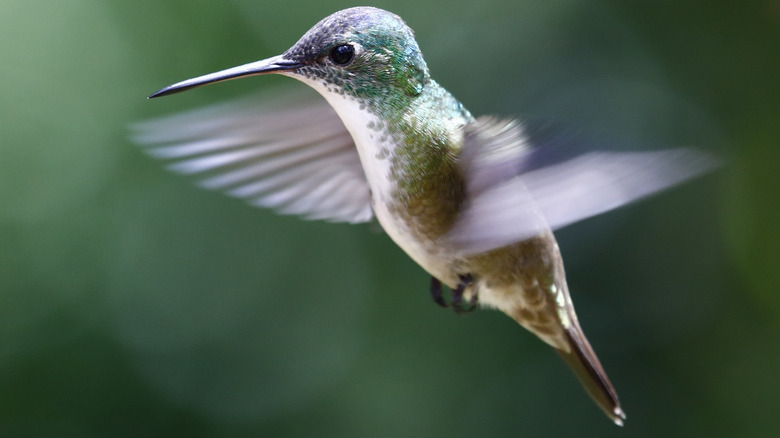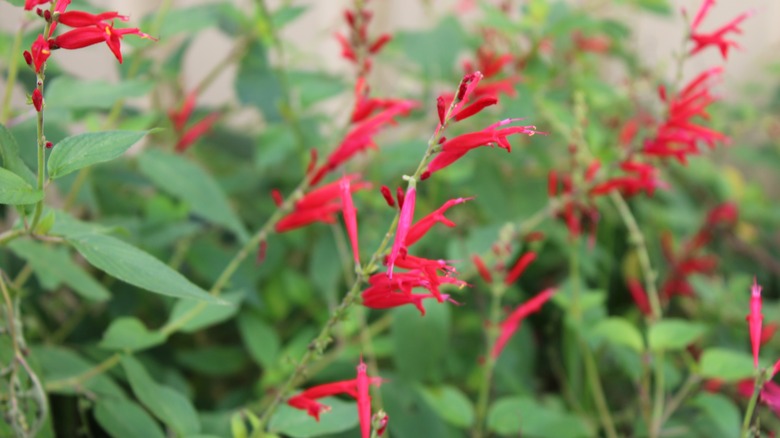Attract Hummingbirds With A Sweet-Smelling Herb They Can't Get Enough Of
Hummingbirds aren't attracted to flowers based on smell, but some of their favorite plants still happen to smell amazing. That's the case with pineapple sage (Salvia elegans). This member of the salvia genus boasts edible flowers which are not only adored by hummingbirds thanks to their bright red color and tubular shape, but it also has a deliciously sweet and minty smell. Its leaves are also fragrant, with a scent reminiscent of pineapples.
One thing to be aware of if you're growing pineapple sage is that it is a short day flowering plant, which blooms relatively late in the growing season in many areas. In fact, in some areas it may not even get to the bloom stage before it is killed by frost. It may also fail to bloom if there is too much light pollution — such as a porch or street light that makes the day seem longer to the plant – in your area. Even if it does bloom, it may be after many of the hummingbirds have already left your area for the season. Though even in the Northeastern United States it's not unheard of for hummingbirds to be spotted in October and November, so your pineapple sage could be a delicious treat for those last few stragglers.
Caring for pineapple sage
Native to Mexico and Central America, pineapple sage is only perennial in USDA Hardiness Zones 8 and higher. Luckily, it grows well as an annual in colder regions. Pineapple sage thrives in full sun and appreciates soil that is well draining and moist. You won't have to worry about deer nibbling the leaves before you get a chance to enjoy them, as pineapple sage is a flower that deer hate.
If you want to be sure you have plenty of red tubular flowers for hummingbirds before they leave your area, consider growing your pineapple sage alongside scarlet sage (Salvia coccinea). These two sage plants make a great duo, as scarlet sage thrives in similar conditions to pineapple sage. And while its flowers and leaves don't have the same unique smell, they start blooming in early summer and don't stop until there's frost on the ground. Adding in additional tubular flowering plants will provide an even wider variety of options for the little birds to enjoy.

